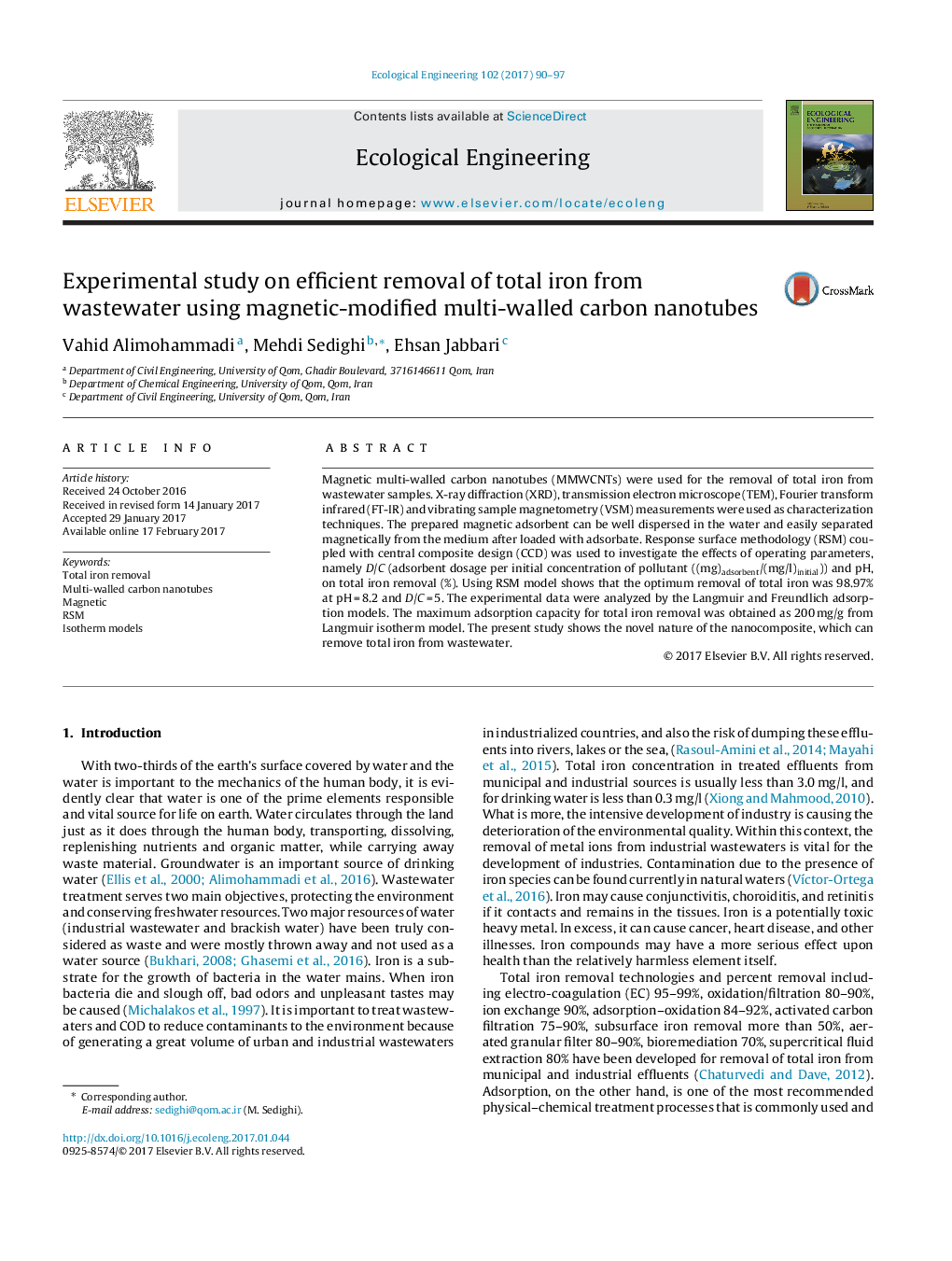| Article ID | Journal | Published Year | Pages | File Type |
|---|---|---|---|---|
| 5743753 | Ecological Engineering | 2017 | 8 Pages |
â¢A magnetic multi-walled carbon nanotube was used for removal of total iron.â¢Response surface methodology was used to investigate the effects of parameters.â¢Using RSM shows the optimum removal of total iron was 98.97% at pH = 8.20 and D/C = 5.00.â¢The Langmuir and Freundlich adsorption models analyzed the experimental data.
Magnetic multi-walled carbon nanotubes (MMWCNTs) were used for the removal of total iron from wastewater samples. X-ray diffraction (XRD), transmission electron microscope (TEM), Fourier transform infrared (FT-IR) and vibrating sample magnetometry (VSM) measurements were used as characterization techniques. The prepared magnetic adsorbent can be well dispersed in the water and easily separated magnetically from the medium after loaded with adsorbate. Response surface methodology (RSM) coupled with central composite design (CCD) was used to investigate the effects of operating parameters, namely D/C (adsorbent dosage per initial concentration of pollutant ((mg)adsorbent/(mg/l)initial)) and pH, on total iron removal (%). Using RSM model shows that the optimum removal of total iron was 98.97% at pHÂ =Â 8.2 and D/CÂ =Â 5. The experimental data were analyzed by the Langmuir and Freundlich adsorption models. The maximum adsorption capacity for total iron removal was obtained as 200Â mg/g from Langmuir isotherm model. The present study shows the novel nature of the nanocomposite, which can remove total iron from wastewater.
Graphical abstractDownload high-res image (132KB)Download full-size image
